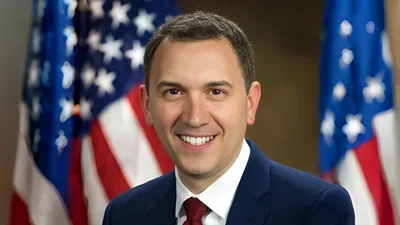Stephen Miran, chairman of the Council of Economic Advisers, has emphasized the importance of balancing regulatory benefits and costs while considering their effects on credit in the economy. This statement was made on the American Financial Services Association's (AFSA) website.
"I do believe there needs to be a fulsome process at the Fed for thinking about not only the benefits of regulations, but the costs as well," said Miran, United States Chairman. "And thinking about the consequences of those regulations for the provision of credit into the economy. And exactly along the lines that you were discussing before."
Miran's nomination to the Federal Reserve Board was examined during a Senate Banking Committee hearing on September 4, 2025, followed by a committee vote on September 10 and a narrow floor confirmation. Lawmakers scrutinized his decision to take unpaid leave from his role as chair of the White House Council of Economic Advisers instead of resigning, raising questions about ethics and Fed independence. He later submitted written responses to senators’ questions for the record.
According to Reuters, U.S. credit availability has tightened in 2025, with banks reporting weaker demand for both business and consumer loans alongside stricter standards for commercial and industrial credit. The Federal Reserve’s Senior Loan Officer Opinion Survey attributed these shifts to concerns over the economic outlook, credit quality, and regulatory pressures. While standards remain historically tight, some recent easing was noted in select categories.
Studies on Federal Reserve regulations indicate that post-crisis measures such as higher capital and liquidity requirements increase lending costs modestly but provide large stability benefits by reducing the probability and severity of banking crises. According to the Bank for International Settlements, meta-studies demonstrate that the net macroeconomic benefits of stronger capital standards remain positive even after accounting for total loss-absorbing capacity and liquidity rules.
Miran is an economist who served as a senior advisor at the U.S. Treasury in 2020–2021, later worked in asset management at Hudson Bay Capital, and was a fellow at the Manhattan Institute before entering government service again. He became a Federal Reserve governor on September 16, 2025, for a term expiring in January 2026 while on unpaid leave as chair of the Council of Economic Advisers.
The Council of Economic Advisers was established in 1946 under the Employment Act to provide the President with objective economic analysis and policy recommendations. Housed in the Executive Office of the President, it is led by a chair and up to two members appointed by the President and confirmed by the Senate. Its mission is to promote employment, production, and purchasing power through evidence-based economic advice.





